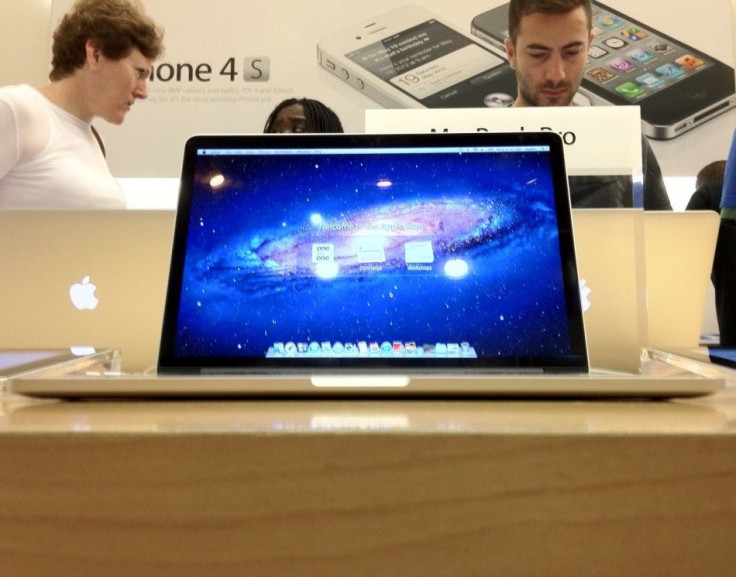MacBook Pro with Retina Display Problems: Apple Faces Class Action Suit For ‘Ghosting’ Issue

Apple is facing a potential class action suit in San Francisco’s California Northern District Court after an owner of its MacBook Pro with Retina display accused the computer company on Wednesday of “tricking” consumers into paying for a poor-quality screen, citing an increasingly common problem that causes images to be burned into the display, also known as “ghosting.”
Even though the Retina display on the 2012 MacBook Pro was provided by two different suppliers -- LG and Samsung -- it wasn’t until recently that customers realized that only the LG-made Retina displays were exhibiting this ghosting malfunction.
“The electronics giant must know about the differences between the two versions, because it spent a considerable amount of time testing the products during research and development and has been inundated with complaints from customers about the LG screen’s problems,” said the lawsuit (via Law360), which was filed by California resident Beau Hodges. “The performance disparity between the LG version and the Samsung version is particularly troubling given that Apple represents the MacBook Pro with retina display as a single, unitary product, described as the highest-quality notebook display on the market,” the complaint said. “None of Apple’s advertisements or representations discloses that it produces the computers with display screens that exhibit different levels of performance and quality.”
Even though Hodges was the sole filer of the lawsuit, it can become a class action suit if others decide to join him in his claim. Hodges may not have trouble finding more suitors: An Apple.com support thread for this particular problem, entitled “MacBook Pro Retina display burn-in,” has 7,258 replies and 367,777 views across more than 500 pages as of Friday morning.
The first commenter on the related Apple.com thread said he noticed the problem when he woke his computer out of sleep in June 2012, shortly after the laptop was released.
“When returning to the login screen (since I have it set to require a password whenever the computer is idle long enough), I noticed what appeared to a very faint ghosting primarily noticeable on darker backgrounds,” wrote the first user on the thread. “After messing around with it a bit, there seems to be a fairly consistent in-display ghosting that occurs without much time at all; I was able to leave my screen on (a little above half-brightness) for about 10-15 minutes and the ghosted ‘burn’ would be on the screen I left it on (which I deliberately reconfigured so that everything would be a new position).”
Affected users said Apple geniuses were only able to offer replacements to their Retina MacBook Pros affected by the burn-in problem. If Apple has been handling all these ghosting issues by replacing problematic computers entirely since June (those Retina displays aren’t easy to remove from their frames), Apple may have a difficult time defending itself against those who say the company knew about these issues but failed to investigate the issue and inform customers accordingly.
That said, arguing that ghosting is a technology issue rather than a supply-chain oversight is probably Apple’s best defense. Back in September, the company posted a document that said ghosting, also known as “image persistence,” is relatively common in displays using in-plane switching, or IPS, technology, such as the MacBook Pro with Retina display.
“You can prevent image persistence by using the display sleep feature to turn off the display when it is not in use,” Apple says on its support page. “You can also use a screen saver to make sure that a static image isn't on the display for long periods of time. Both of these features are on by default in Mac OS X, but you can adjust the settings as needed.”
Apple on Thursday released a software update for the MacBook Pro with Retina display, which updates the laptop’s system management controller, or SMC, that “resolves a rare issue where users may experience slow frame rates when playing graphics-intensive games on the 15-inch MacBook Pro with Retina Display.” Apple said the SMC 1.1 update also includes “bug fixes for Power Nap, wake from sleep and fan control.”
We’ve reached out to Apple for comment on this particular lawsuit, and we’ll update this article as soon as we learn more.
© Copyright IBTimes 2025. All rights reserved.






















